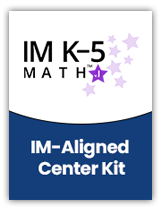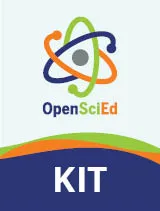Search Listing Name

product:
The Last Cuentista Tradebook
Habia una vez . . . There lived a girl named Petra Pena, who wanted nothing more than to be a storyteller, like her abuelita. But Petra's world is ending. Earth has been destroyed by a comet, and only a few hundred scientists and their children - among them Petra and her family - have been chosen to journey to a new planet. They are the ones who must carry on the human race. Hundreds of years later, Petra wakes to this new planet - and the discovery that she is the only person who remembers Earth. A sinister Co
product:
OpenSciEd Unit 7.4: Photosynthesis and Matter Cycling Spanish Student Edition
OpenSciEd Middle School science program addresses all middle school NGSS standards. This comprehensive science curriculum empowers students to question, design, investigate, and solve the world around them.
- Phenomenon Based - Centered around exploring phenomena or solving problems
- Driven by Student Questions - Storyline based on students’ questions and ideas
- Grounded in Evidence - Incremental building and revision of ideas based on evidence
- Collaborative - class and teacher figure

product:
IM: Grade 5 Bundle Center Kit - Spanish
To help educators save time, IM-aligned center kits provide all the printed resources to improve teaching efficiency and enhance student learning!
The Grade 5 Spanish Bundle Center Kit includes pre-cut game boards, recording sheets, and center & lessons card decks.
For a detailed list, please
product:
The World Turned Upside Down: The American Revolution Teacher Guide 1 Year License with Student Guide File
The World Turned Upside Down: The American Revolution
Grades 4-5
Intensive document analysis and exploration of the concept of cause and effect form the foundation of this unit, which focuses on the Revolutionary period in American history. The unit explores the chronology and major event
product:
CryptoClub: Student Cipher Handbook 1 Year License
The Student Cipher Handbook is the centerpiece of the CryptoClub curriculum. It is a student reference and workbook that is recommended for use in informal learning environments such as after-school or enrichment programs. It introduces ciphers in a way that encourages problem-solving and reasoning, and provides engaging messages to encrypt, decrypt, and crack. The Student Cipher Handbook can be u


